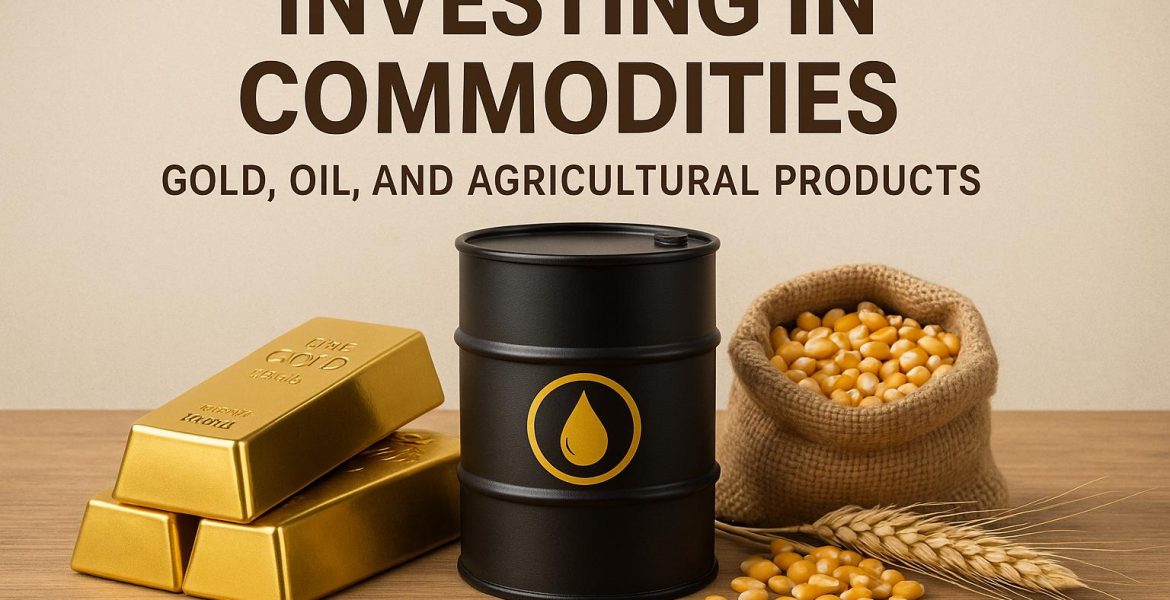
Investing in Commodities: Gold, Oil, and Agricultural Products
admin - September 16, 2025Understanding Commodities as an Investment
Commodities, which are physical goods, hold a unique place in the spectrum of investment assets. Traded across various markets worldwide, commodities are primarily segmented into three major categories: metals, energy, and agricultural products. Each category offers its own set of investment opportunities and inherent risks. These attributes considerably differ from traditional forms of investments, such as stocks and bonds.
Commodities serve as a fascinating avenue for investors looking to diversify their portfolios. Each commodity functions under distinct market dynamics and is subject to unique influences such as geopolitical factors, supply and demand fluctuations, or environmental conditions. Understanding these nuances is vital for making informed investment choices.
Gold: A Timeless Store of Value
Gold has consistently been classified as a store of value, supporting economies and investors for centuries. Its status stems from its ability to preserve wealth and its historical role as a form of currency and a measure of wealth. Gold’s value proposition is predominantly linked to its stability, particularly during phases of economic uncertainty or geopolitical tensions, when it tends to act as a safe haven for investors.
Benefits of Investing in Gold: One significant advantage of gold investment is its role as a hedge against inflation. During periods when inflation erodes the purchasing power of fiat currencies, gold generally maintains its purchasing power. This characteristic makes it an attractive option for investors looking long-term. In addition, gold provides an excellent portfolio diversification tool. Since gold often moves independently from stocks and bonds, adding it to an investment portfolio can help reduce overall volatility and risk.
However, gold investment is not without its caveats. Unlike some other asset classes, gold does not generate income such as dividends or interest. Its returns are primarily capital gains, which means investors must rely on price appreciation. Furthermore, the price of gold can experience variations in the short term, impacting the value of investment portfolios.
Oil: The Engine of Global Economy
Oil functions as the cornerstone of modern industrial civilization, serving as a critical energy source for transportation and myriad industries. Its significance in the global market cannot be overstated, making it a focal point for investors looking to engage with the energy sector.
Key Aspects to Consider: The oil market is characterized by its susceptibility to variations in supply and demand. For instance, geopolitical events such as conflicts or trade disruptions can significantly impact oil supply chains, resulting in market volatility. Additionally, decisions made by major oil-producing countries or coalitions, such as OPEC, can affect production levels and influence global oil prices. On the other hand, the global economic environment also plays a critical role in determining oil demand.
Investing in oil can be accomplished through several avenues. Futures contracts enable traders to speculate on oil prices, while oil exchange-traded funds (ETFs) offer a more diversified approach, spreading risk across multiple holdings. Moreover, investing in oil companies’ stocks allows investors to potentially benefit from dividends and capital growth.
Potential investors in oil should brace themselves for the inherent volatility of the market. Being informed about international policies and market dynamics is crucial, as these can directly affect oil production and consumption, thereby altering prices.
Agricultural Products: Vital and Volatile
Agricultural commodities, encompassing vital crops like wheat, corn, and soybeans, constitute another essential group of investment assets. Integral to the global food supply chain, these commodities hold a significant position in investment considerations, particularly as the global population continues to grow.
Important Factors: One of the primary influences on agricultural commodity prices is climate impact. Weather patterns, including droughts, floods, and temperature variations, can dramatically affect crop yields, leading to fluctuations in supply and subsequent price changes. For instance, a poor harvest can cause a sharp rise in prices due to decreased supply, while an excellent harvest might lead to a surplus and lowered prices.
Global demand also plays a fundamental role in determining prices and investment potential. As the global population expands, the demand for food products naturally increases. This rising demand creates opportunities for investors to capitalize on price movements.
Investing in agricultural products can be achieved via various means, including futures contracts and options. Agricultural ETFs offer a way to access a basket of these commodities, spreading the risk. Investors venturing into agriculture should remain vigilant about seasonal changes and official crop reports, as these factors can significantly impact market movements and subsequent investment returns.
Conclusion
In essence, investing in commodities such as gold, oil, and agricultural products provides lucrative opportunities for diversification and risk management within a portfolio. Understanding the nature and behavior of each commodity class is imperative for optimizing investment decisions. Each commodity is subject to distinct market factors that influence its price and investment potential. As with all investments, it is important to stay informed about market trends, geopolitical developments, and environmental conditions affecting these commodities.
For those inclined to delve deeper into commodity investment opportunities, resources such as the CME Group and Reuters Commodities offer valuable insights and updated market analyses. These platforms can provide investors with comprehensive data and tools to navigate the complexities of the commodity markets effectively. By staying informed and understanding the particularities of these assets, investors can better position themselves to leverage the potential benefits and manage the risks associated with investing in commodities.
This article was last updated on: September 16, 2025
